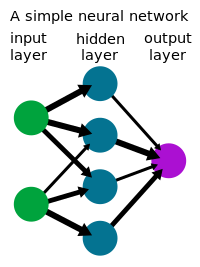
Photo from wikipedia
Quantitative systems pharmacology (QSP) is an emerging discipline that aims to discover how drugs modulate the dynamics of biological components in molecular and cellular networks and the impact of those… Click to show full abstract
Quantitative systems pharmacology (QSP) is an emerging discipline that aims to discover how drugs modulate the dynamics of biological components in molecular and cellular networks and the impact of those perturbations on human pathophysiology. The integration of systems-based experimental and computational approaches is required to facilitate the advancement of this field. QSP models typically consist of a series of ordinary differential equations (ODE). However, this mathematical framework requires extensive knowledge of parameters pertaining to biological processes, which is often unavailable. An alternative framework that does not require knowledge of system-specific parameters, such as Boolean network modeling, could serve as an initial foundation prior to the development of an ODE-based model. Boolean network models have been shown to efficiently describe, in a qualitative manner, the complex behavior of signal transduction and gene/protein regulatory processes. In addition to providing a starting point prior to quantitative modeling, Boolean network models can also be utilized to discover novel therapeutic targets and combinatorial treatment strategies. Identifying drug targets using a network-based approach could supplement current drug discovery methodologies and help to fill the innovation gap across the pharmaceutical industry. In this review, we discuss the process of developing Boolean network models and the various analyses that can be performed to identify novel drug targets and combinatorial approaches. An example for each of these analyses is provided using a previously developed Boolean network of signaling pathways in multiple myeloma. Selected examples of Boolean network models of human (patho-)physiological systems are also reviewed in brief.
Journal Title: Journal of Pharmacokinetics and Pharmacodynamics
Year Published: 2017
Link to full text (if available)
Share on Social Media: Sign Up to like & get
recommendations!